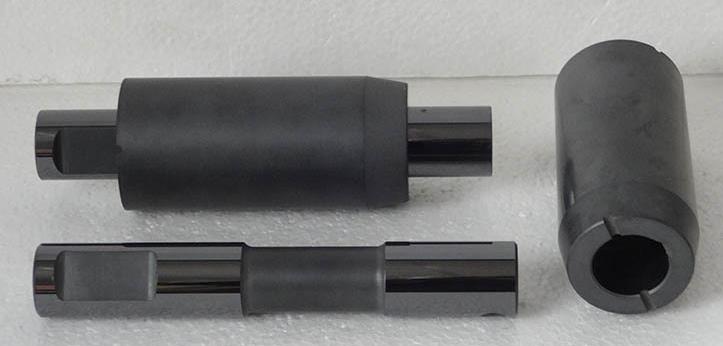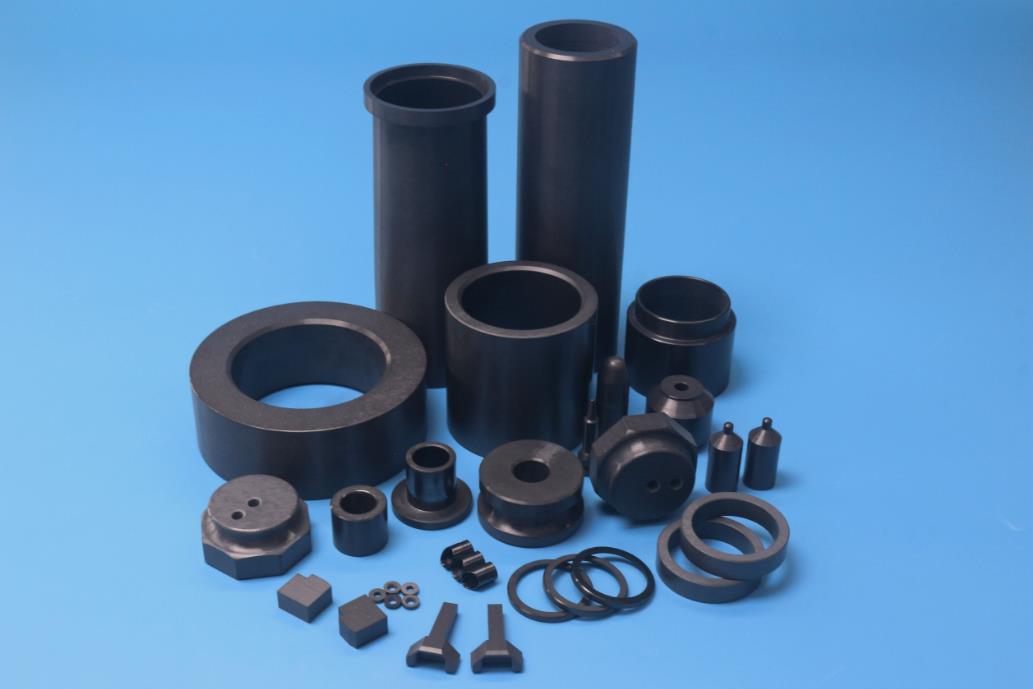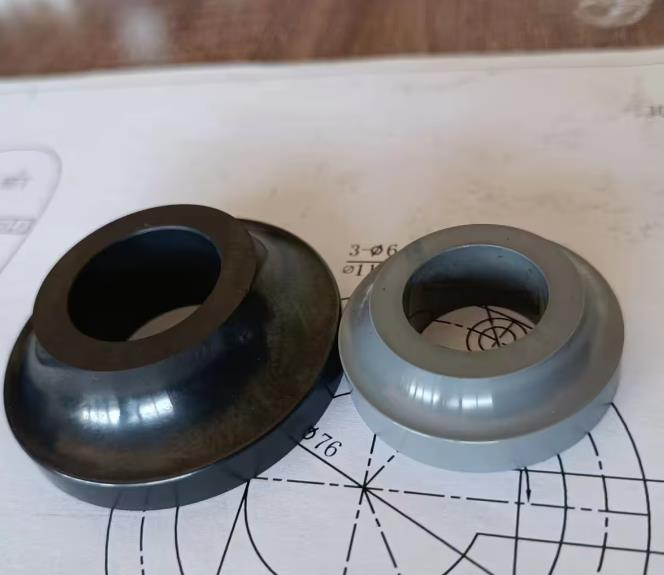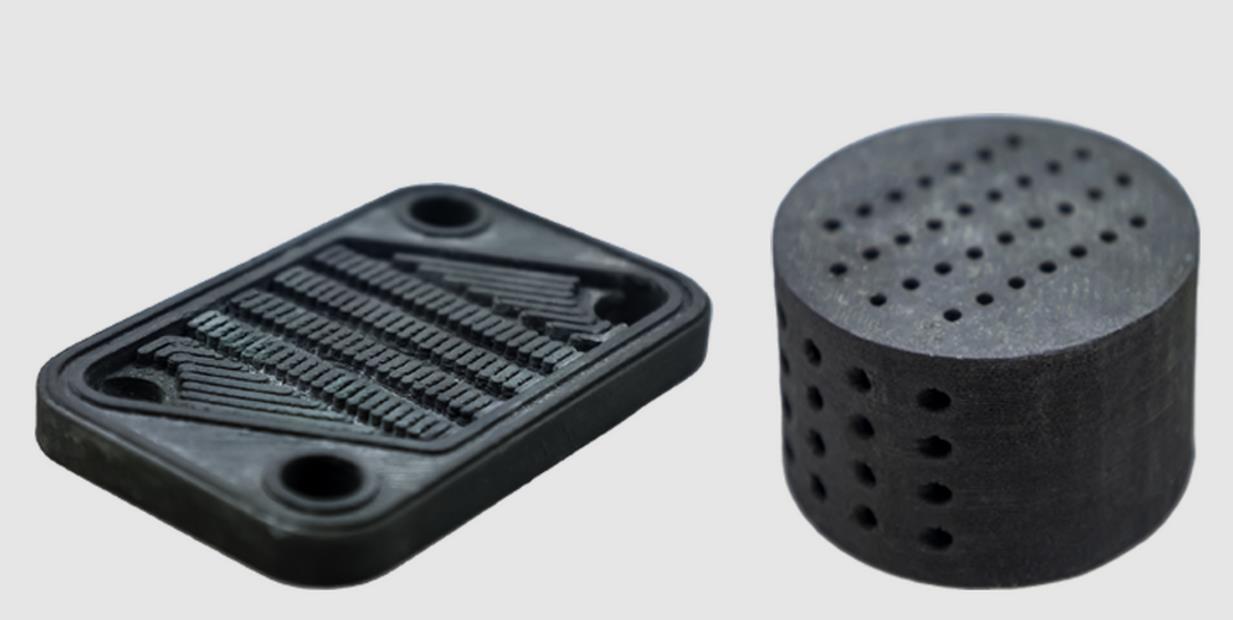High thermal conductivity silicon nitride ceramics
Discussion on high thermal conductivity and sintering process of silicon nitride ceramics
Silicon nitride stands out for its outstanding combined performance of high thermal conductivity and high reliability. The AMB ceramic liner made of silicon nitride ceramic substrate is highly matched with the thermal expansion coefficient of the third-generation semiconductor substrate SiC crystal material and has excellent stability, which makes Si3N4 an ideal choice for the high-conductivity substrate material of the third-generation SiC semiconductor power devices.

The atomic bonding strength, average atomic mass and crystal anharmonic vibration of silicon nitride ceramics are similar to SiC, which has the theoretical basis of high thermal conductivity materials. The theoretical thermal conductivity of Si3N4 crystals is 200 to 320W/mK, but the actual thermal conductivity is usually lower than the theoretical value due to the defects of grain boundaries, pores and impurities in the structure of silicon nitride.
Thermal conductivity in practical applications
In practical application, the thermal conductivity of silicon nitride ceramics is affected by many factors. The size of grain, the presence or absence of intergranular oxygen and other impurities, and the content of intergranular phase all have great influence on the thermal conductivity of silicon nitride. For example, the growth of grain can cause high thermal conductivity, which may also lead to a decrease in bending strength.

According to different sintering additives and preparation technology, the thermal conductivity of silicon nitride ceramics is also different. Some studies have shown that silicon nitride ceramics with a thermal conductivity of 177 W/(m·K) can be obtained by using Y2O3-MgO as a sintering agent through a long heat treatment process. With Y2O3-MgSiN2 as sintering assistant, silicon nitride ceramic material with thermal conductivity of 168 W/(m·K) and fracture toughness of 10 MPa can be prepared.
The forming and sintering process of silicon nitride ceramic substrate is discussed in detail. In terms of molding, in order to obtain ceramic materials with anisotropy, we can ensure a directional effect in one or two dimensions by regulating the arrangement and growth of grains. At present, casting, rolling film, casting and injection molding are widely used in the preparation of high thermal conductivity silicon nitride substrate, and casting molding is widely respected for its characteristics suitable for engineering preparation technology.

Casting process mainly includes casting and drying two links. Through the connection between the defoaming tank and the feed pipe of the casting machine, the slurry is introduced into the casting machine under nitrogen pressure, and the film is evenly spread on the film belt. Subsequently, the film is sent to the drying channel through the conveyor belt, and the hot air generated by electric heating is dried, and the temperature is controlled within the range of 150~180 ° C. In this process, part of the organic matter with low boiling point will volatilize and remove, and finally get dry silicon nitride substrate.
▲ Process route of casting molding
The Si3N4 grains of silicon nitride ceramics produced by the casting process show a specific orientation, which results in the difference of thermal conductivity in different directions, and the thermal conductivity increases significantly in a certain direction.
Pouring molding
Casting molding, also known as casting molding, involves the injection of a carefully prepared ceramic paste into a plaster mold. Due to the breathability and water absorption characteristics of the gypsum mold, the slurry will gradually lose water after contact with the mold, and the fine particles in it will be orderly deposited according to the shape of the mold, forming a uniform and dense layer of mud. Excess stock can be removed from the mold when the mud layer reaches a predetermined thickness. After the water in the mud layer is completely absorbed and independent molding is achieved, the billet can be taken out for drying and treatment.

Injection molding
Injection molding, also known as hot die casting molding, gives a metal or ceramic powder similar fluidity to a polymer by adding a specific amount of polymer and additives. Under the action of pressure, the slurry is injected into the metal mold, and after cooling and demoulding, the required blank is obtained. This technology is regarded as an important "national key technology" in developed countries such as the United States.
▲ Ceramic injection molding process characteristics
Injection molding method stands out for its high material utilization rate, rapid automatic mass production capacity, and the preparation of small volume, complex shape, high dimensional accuracy and other features. Its flow die technology ensures uniform density of green billets, thereby improving the performance of sintered products. In addition, the method has the advantage of low production cost.
Sintering technology of silicon nitride ceramics with high thermal conductivity
The high thermal conductivity Si3N4 ceramic materials are prepared by hot isostatic sintering (HIP), hot press sintering (HPS), reaction sint-resintering (SRBSN) and air pressure sintering (GPS). Early studies favored hot isostatic pressing sintering, but in view of its expensive equipment, cumbersome operation and high cost, the current engineering preparation is more inclined to use pressure sintering and reaction sintering and resintering two methods.
Reaction sintering and resintering process (SRBSN)
Oxygen impurity content is the key factor affecting the thermal conductivity of Si3N4 ceramics. Although the highest purity commercial Si3N4 powder still contains more than 1% oxygen impurities, with the advancement of modern semiconductor technology, high purity Si powder has significantly lower oxygen and metal impurities content than Si3N4 powder. Based on this, the team of Japan Industrial Technology Research Institute used high purity Si powder as raw material, supported by Y2O3-MgO sintering additives, by improving the SRBSN process (M-SRBSN), successfully prepared the thermal conductivity of up to 182W·m-1·K-1 Si3N4 ceramics, so far no one can. Compared with the traditional pressure sintering method using α-Si3N4 powder as raw material, the Si3N4 ceramics prepared by this method show significant advantages in terms of high thermal conductivity.
Pneumatic sintering process (GPS)
The pneumatic sintering process also occupies a place in the preparation of high thermal conductivity silicon nitride ceramics. Its specific features and advantages will be elaborated in the following paragraphs.
Improving the GPS process has also proved to be an effective way to improve the thermal conductivity of Si3N4 ceramics. The research team of Xi 'an Jiaotong University has successfully developed a new two-step pneumatic sintering method by deeply exploring the influence of pre-sintering temperature on particle rearrangement and α→β phase transition during liquid phase sintering. When the pre-sintering temperature was set at 1525℃, the method made the Si3N4 ceramics reach a nearly completely dense state in the subsequent high-temperature sintering at 1850℃, showing a remarkable bimodal microstructure, thus achieving excellent comprehensive properties, thermal conductivity up to 79.42W·m-1·K-1, and bending strength up to 801MPa.
The preparation of Si3N4 ceramics with high mechanical and thermal properties has become a long-term research focus in order to meet the strict requirements of the third generation semiconductor chip packaging on the performance of ceramic substrates. Although breakthroughs have been made to achieve both high thermal conductivity (> 150W·m-1·K-1) and high toughness (> 10MPa·m1/2), the balance between thermal conductivity and bending strength remains. Therefore, the next research work will focus on further improving the thermal conductivity of Si3N4 ceramics without sacrificing the bending strength as much as possible.
In addition, the strong covalent bond characteristics of silicon nitride make it difficult to achieve sintering densification through solid phase diffusion, so the use of sintering additives is required. However, the choice of sintering additives has an important effect on the thermal conductivity of silicon nitride ceramic materials. Ideally, the sintering additives with high activity and low content should be selected, and the grain boundary phase formed does not affect the density of silicon nitride ceramics. At the same time, the additive should be able to form a low viscosity liquid phase during the sintering process, and promote the phase transformation and grain growth of silicon nitride. In the end, the resulting grain boundaries are correspondingly easy to crystallize and convert into a highly thermally conductive crystalline phase, thus ensuring excellent mechanical and thermal properties of the silicon nitride ceramic material.
Nitride sintering auxiliary
The nitrides that can be used for Si3N4 sintering include VN, YN, Mg3N2, AlN, Ca3N2 and MgSiN2. Among them, MgSiN2 is notable for its unique properties. It can not only effectively reduce the melting point of silicate glass, but also avoid the introduction of unnecessary oxygen impurities. Even more exciting is that through combustion synthesis technology, we can now mass-produce high-purity MgSiN2 powders, thus greatly reducing costs. Therefore, the nitride sintering agent MgSiN2 shows great potential in the preparation of high thermal conductivity Si3N4 ceramics.
Reducing sintering additives
Reducing agents such as metal hydride, silica powder or carbon powder can be used to reduce oxygen content and increase the N/O ratio of intercrystalline second phase by the reduction reaction of metal hydride, silothermic reduction reaction or carbothermal reduction reaction. This helps to promote the abnormal growth of β-Si3N4 grains, thereby reducing the lattice oxygen content and ultimately increasing the thermal conductivity of Si3N4 ceramics. The team of Shanghai Institute of Silicate of Chinese Academy of Sciences adopted this method, they chose YH2, GdH2, YbH2 and ZrH2 and MgO to form a composite sintering agent, and successfully prepared Si3N4 ceramics with high thermal conductivity through two-step pressure sintering. In addition, by adding a small amount of silica powder, using two-step barometric sintering and a new silicothermal reduction reaction, the team prepared Si3N4 ceramics with a distinct bimodal microstructure, and its thermal conductivity was significantly improved compared to samples without silica powder.
Ternary compound sintering auxiliary
The use of non-oxide instead of oxide as a sintering agent can reduce the oxygen content in the liquid phase, thereby reducing the lattice oxygen content of Si3N4. However, this leads to an increase in the N/O atom ratio in the liquid phase, which may inhibit densification to some extent. In order to solve this problem, it is usually necessary to increase the sintering temperature or extend the holding time, but this will undoubtedly increase the preparation cost, and it is not conducive to maintaining the uniformity of the grain. Therefore, researchers are exploring methods of low temperature and low pressure or low temperature non-pressure sintering to prepare Si3N4 ceramics with excellent thermal and mechanical properties at low cost. In this case, the use of ternary sintering additives has become an important research direction.